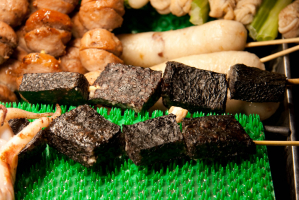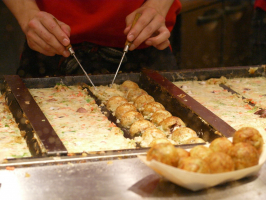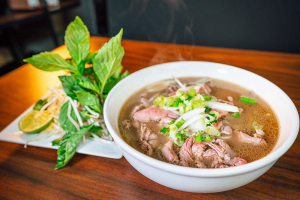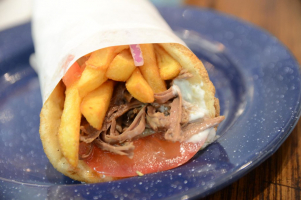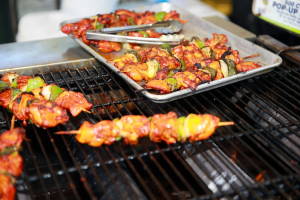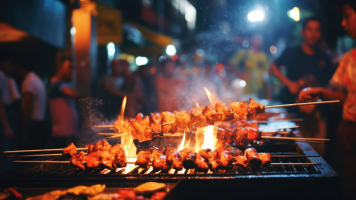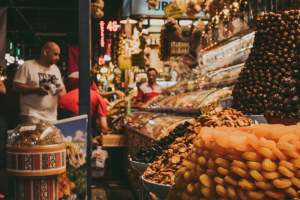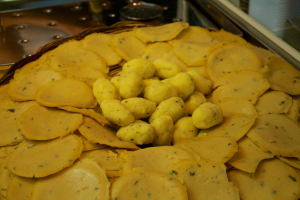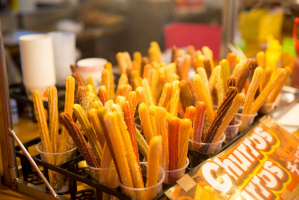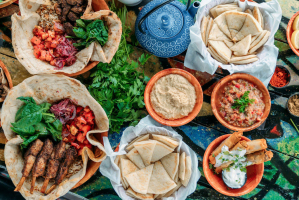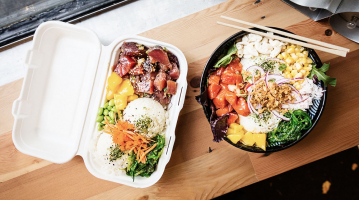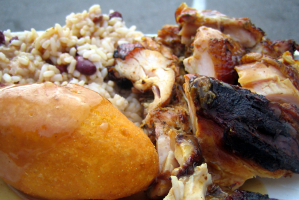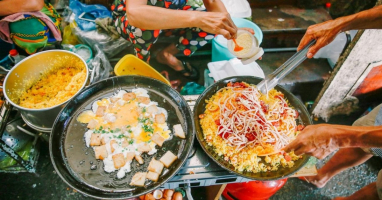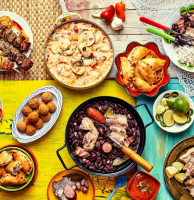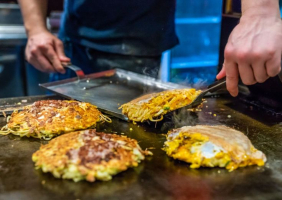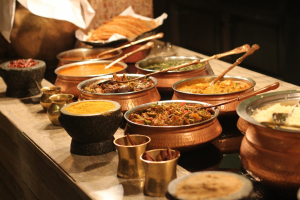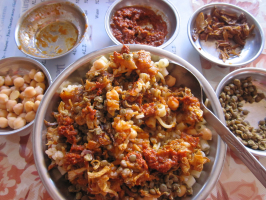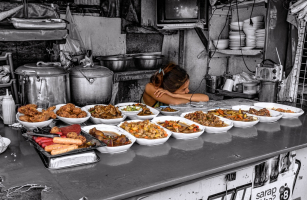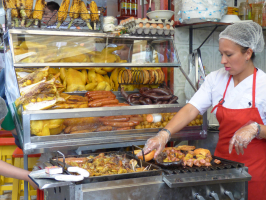Top 10 Best Peruvian Street Foods
Discover the vibrant flavors of Peru through its Top 10 Best Peruvian Street Foods. From the bustling streets of Lima to the Andean highlands, these delectable ... read more...dishes showcase the country's rich culinary heritage and are a must-try for any food enthusiast.
-
Hold first place in top 10 Best Peruvian Street Foods is Butifarra. The process begins with selecting the right cuts of pork meat. Lean cuts like shoulder or loin are chosen for Butifarra, and the meat is carefully trimmed of excess fat and connective tissues. The selected meat is then coarsely ground to achieve the desired texture; the coarseness of the grind is a distinctive characteristic of Butifarra.
The ground meat is seasoned with a mixture of ingredients, which may include salt, black pepper, garlic, and other spices; the exact spice blend can vary based on regional and personal preferences, making each Butifarra unique. Once seasoned, the meat is mixed thoroughly to evenly distribute the spices and create a well-balanced flavor profile. At this stage, some recipes may call for the addition of a small amount of ice water to help bind the ingredients together.
The seasoned meat mixture is then stuffed into natural casings, usually made from the intestines of pigs. The casings are tied off at regular intervals to form individual sausages. After stuffing, the sausages are left to air dry for a period of time. This step helps to develop the characteristic texture and flavor of Butifarra; it can take several hours to a few days, depending on regional traditions and climate conditions.
Butifarra can be prepared in various ways; it can be grilled, roasted, boiled, or even fried. Each method imparts a distinct flavor and texture to the sausage; grilling is a common choice, giving the sausage a smoky and slightly crispy exterior. Butifarra is often served in slices or as a main dish, accompanied by a variety of side dishes such as bread, aioli, or roasted vegetables. It can also be used as an ingredient in other dishes, adding its unique flavor to stews and casseroles.
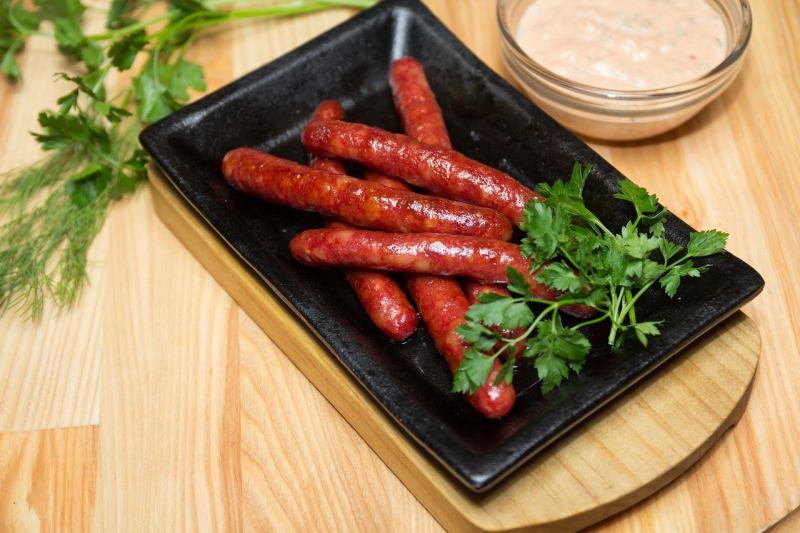
Screenshot of https://www.mediakatalogas.lt/nuotrauka/1144663/desreles-bratwurst-mesa-grilis-bbq-is-arti-sultingas-keptuve-desreliu-medziokle Video by 2 Guys & A Cooler -
Anticuchos, a beloved South American street food, offers a tantalizing glimpse into the culinary traditions of the Andean region, particularly in countries like Peru. This iconic dish showcases the unique blend of indigenous and Spanish influences that shape the continent's food culture. At their heart, anticuchos are skewers of marinated and grilled meat, with beef heart being the traditional and most popular choice.
Over time, the dish has evolved to include a variety of meats, such as chicken, beef, or even seafood, catering to diverse palates.The key to Anticuchos' irresistible flavor lies in the marinade. The meat is soaked in a mixture of spices, including cumin, aji pepper, garlic, and vinegar, which infuses it with a smoky and savory taste.
In Peru, it's often accompanied by boiled potatoes, choclo (giant corn), and a delicious creamy sauce called huancaina. These sides provide a balance of textures and flavors, making the dish a complete and satisfying meal. The cultural significance of anticuchos goes beyond their culinary appeal. It is a representation of the fusion of Indigenous, Spanish, and African influences that have shaped South American cuisine; it is also a symbol of community and togetherness, often enjoyed at social gatherings, street food markets, and festivals.
Anticuchos' widespread popularity extends well beyond South America, with food enthusiasts worldwide savoring their unique flavors. Its appeal lies in the artful combination of marinated meats, smoky grilling, and a rich history that reflects the diverse and vibrant culinary tapestry of the Andean region. Whether enjoyed on a bustling street corner in Lima or in a global food festival, Anticuchos offer a delicious and culturally enriching experience that transcends borders and continues to captivate taste buds around the world.
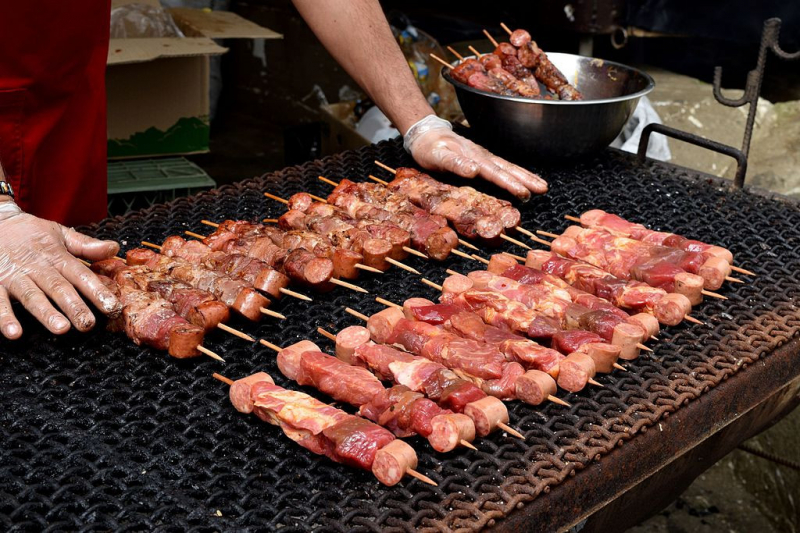
Screenshot of https://commons.wikimedia.org/wiki/File:Anticuchos_-_Flickr_-_rvcolmenares.jpg Video by Chef Miguelito TV -
Causa is the next dish in the top 10 best Peruvian street foods. The history of the Causa dish in Peru is a fascinating journey that reflects the confluence of indigenous and foreign culinary influences. This iconic Peruvian dish is a delicious testament to the country's diverse cultural heritage and innovative approach to gastronomy. Causa's origins can be traced back to the pre-Columbian era, when the Inca civilization thrived in the Andean region of Peru. At that time, they cultivated and consumed potatoes, which were native to the Andes.
The Incas used potatoes to create a dish known as "papas amarillas," a simple yet hearty preparation. The Spanish colonization in the 16th century introduced new ingredients to Peru, including key elements of the modern Causa, such as lime, onions, and aji amarillo (a type of yellow chili pepper). The fusion of these Old World and New World ingredients began to shape the culinary landscape.
Causa, as it's known today, began to take form in the 19th and early 20th centuries. The dish evolved with the incorporation of elements like hard-boiled eggs, olives, and mayonnaise. Causa continued to evolve and refine its preparation, becoming a staple dish in Peruvian cuisine.
Today, Causa remains a beloved and versatile dish, cherished for its vibrant colors, bold flavors, and unique texture. It is often found on the streets of Peru, served in individual portions or as part of larger platters alongside seafood, chicken, or vegetables. Its history showcases the adaptability of Peruvian cuisine and its ability to incorporate diverse influences into a culinary masterpiece that honors tradition while embracing modern flavors and techniques.
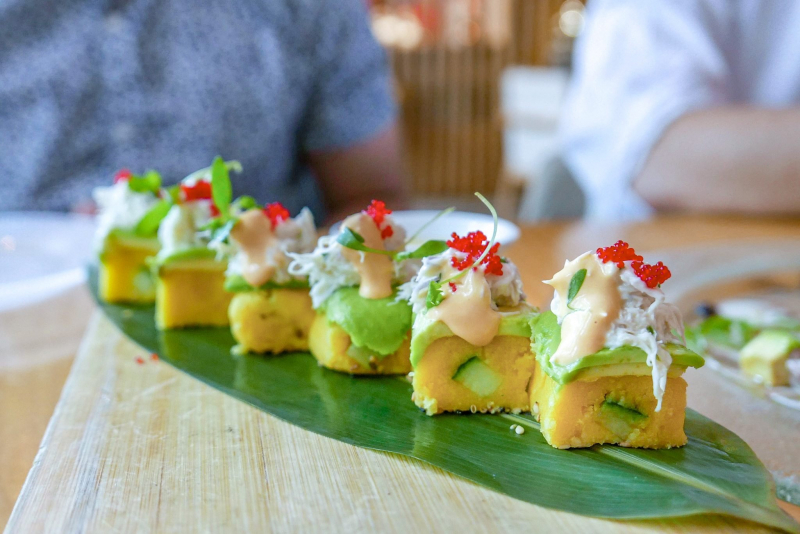
Screenshot of https://commons.wikimedia.org/wiki/File:California_Roll_%28Nikkei%29-_Potato_causa,_jumbo_lump_crab,_spicy_mayo,_cucumber,_avocado,_tobiko,_huancaina_sauce_$16.jpg Video by PureWow -
Picarones hold a special place in the hearts of Peruvians for several compelling reasons. These sweet, ring-shaped fritters are a beloved part of Peru's culinary tradition, and their popularity is deeply rooted in the country's history and culture. First and foremost, picarones are a delightful and unique dessert, they are made by combining pumpkin and sweet potato, creating a distinct flavor and texture that is both comforting and indulgent.
The result is a mouthwatering combination of crispy on the outside and soft on the inside, with a syrupy sweetness that's hard to resist. Furthermore, picarones are often associated with special occasions and traditions in Peru; they are commonly enjoyed during religious festivities, such as Semana Santa (Holy Week), as well as local fairs and celebrations.
The act of preparing and enjoying picarones is a cherished tradition that is passed down through generations. Families often gather in the kitchen to make these delicious treats, reinforcing bonds and creating lasting memories. The aroma of picarones being fried in hot oil is an inviting and comforting scent that instantly transports many Peruvians back to their childhood.
Picarones' attractiveness also stems from their availability; they are readily found on the streets of Peru, sold by street vendors and local markets. Their affordability and accessibility make them a favorite choice for a quick and satisfying sweet treat. Picarones' allure to Peruvians lies in their delectable taste, strong cultural associations, and the sense of nostalgia and togetherness they evoke.
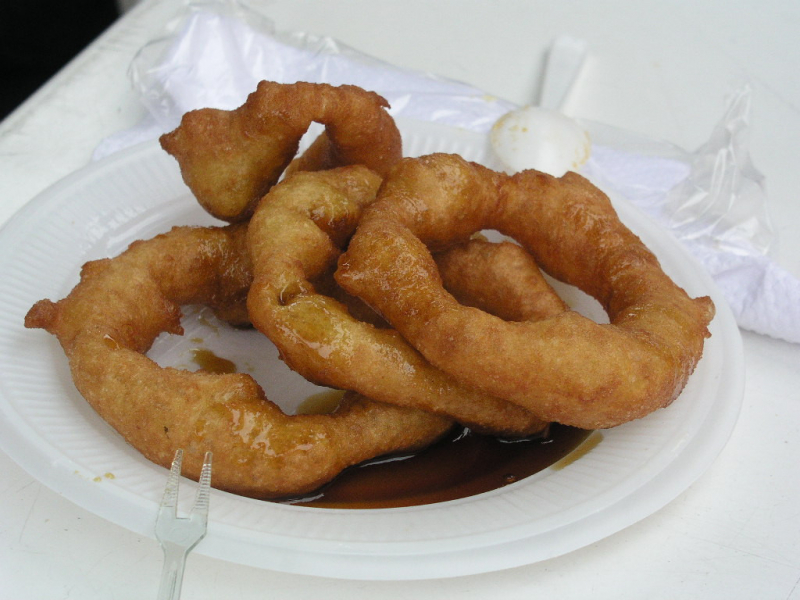
Screenshot of https://commons.wikimedia.org/wiki/File:Peru_Picarones.jpg Video by AmigoFoods -
Mazamorra morada is a traditional Peruvian dessert with a fascinating evolution on the streets of Peru. This sweet, purple corn pudding has a rich history that has transformed it into a beloved street food over the years. Mazamorra morada's origins can be traced back to pre-Columbian times, when the Inca Empire thrived. The Incas cultivated and consumed purple corn, using it to make a type of porridge.
With the arrival of the Spanish conquistadors, the culinary landscape of Peru began to change. The Spaniards introduced new ingredients, including sugar and spices, which were incorporated into the traditional Inca recipe, resulting in the Mazamorra morada we know today. The dessert's journey to becoming a popular street food can be attributed to its delicious taste and adaptability. Street vendors in Peru recognized the appeal of Mazamorra morada, and its preparation was gradually simplified to meet the demands of busy streets.
The evolution of this dish also reflects the fusion of indigenous and European culinary traditions in Peru. The addition of ingredients like pineapple, apple, and dried fruits enhances the flavor and texture of the pudding, creating a unique and delightful taste experience. Furthermore, the vibrant purple color of the dish is not only visually appealing but also culturally significant, as it represents the Andean heritage of Peru.
Mazamorra morada has become an integral part of Peruvian street food culture, often enjoyed alongside other popular treats like picarones. Its accessibility and affordability make it a favorite choice for those seeking a sweet and refreshing snack while exploring the bustling streets of Peru. The evolution of Mazamorra morada on the streets of Peru showcases the blending of indigenous and Spanish influences, resulting in a delightful, accessible, and culturally significant dessert that continues to captivate the taste buds of locals and visitors alike.
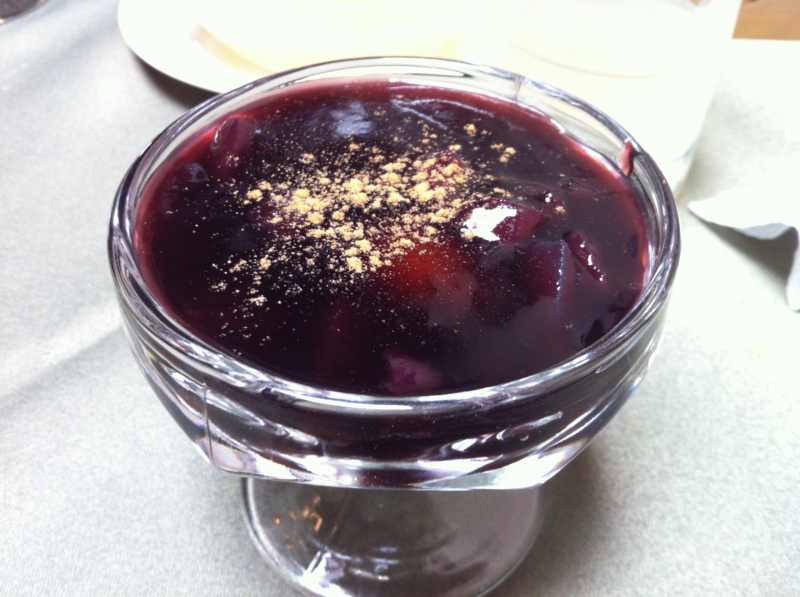
Screenshot of https://commons.wikimedia.org/wiki/File:Lima_%28Per%C3%BA%29_-_Restaurante_El_Embrujo_-_Mazamorra_morada.jpg Video by AyQueRico -
Holding the 6th position in the top 10 best Peruvian street foods is ceviche, a dish celebrated globally that is the epitome of fresh and vibrant flavors. Hailing from the coastal regions of Latin America, especially Peru, this iconic dish has charmed food enthusiasts with its unique preparation and mouthwatering taste. Ceviche is not just a meal; it's an art form that pays homage to the bountiful treasures of the sea.
The citric acid acts as a cooking agent, gently "cooking" the seafood without the need for heat. The result is a tender and delicate texture that retains the seafood's natural sweetness. The essence of ceviche lies in its marinade, known as "leche de tigre" or "tiger's milk." This elixir combines lime or lemon juice, onions, cilantro, and a touch of chili for heat. The balance of these flavors creates a bold and refreshing taste that awakens the senses.
Variations of ceviche can be found throughout the region, each reflecting local ingredients and cultural influences, from the Mexican "aguachile" to the Peruvian "tiradito." Ceviche transcends its culinary appeal; it is a cultural symbol of Latin America's coastal communities. It represents a way of life intricately connected to the sea and its abundance.
Ceviche has achieved international recognition and is a favorite of food connoisseurs worldwide. Its irresistible combination of fresh ingredients, zesty marinade, and cultural significance make it a dish that transcends borders. Whether relished on a sun-soaked beach in Peru, a bustling seafood market in Mexico, or at a trendy urban restaurant, ceviche is a celebration of the ocean's bounty and a timeless culinary treasure.
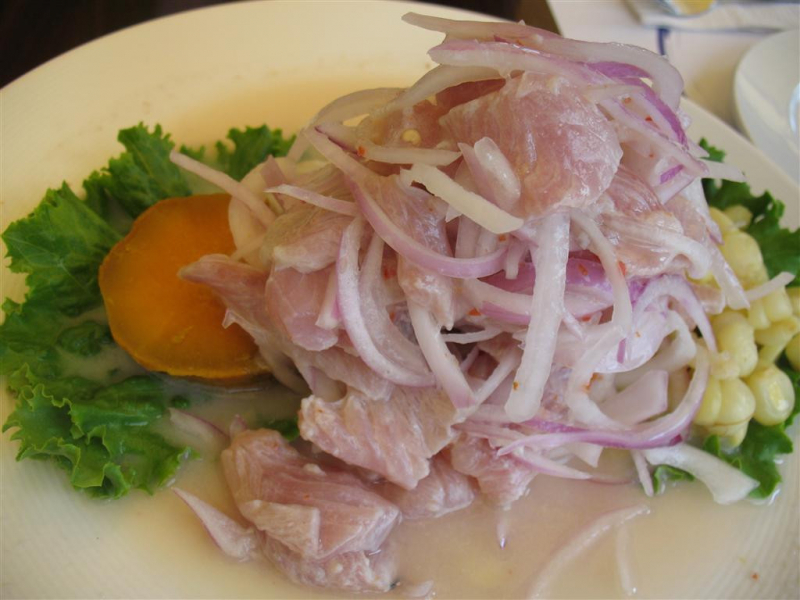
Screenshot of https://commons.wikimedia.org/wiki/File:Ceviche_at_Peru.jpg Video by WatchMojo.com -
Papa Rellena, a beloved Peruvian street food, has undergone a fascinating evolution that reflects the country's culinary history and cultural diversity. This sweet, purple corn pudding has a rich history that has transformed it into a beloved street food over the years. This dish, whose name translates to "stuffed potato," has a rich and evolving heritage that can be traced back to the fusion of indigenous and Spanish influences.
Spanish conquistadors introduced ingredients like potatoes and ground beef to the indigenous people of Peru. This fusion gave rise to the concept of stuffing seasoned ground meat inside a potato-based dough, which was then deep-fried to perfection. The result was a flavorful, convenient, and portable snack.
Over time, the original Spanish influence on Papa Rellena continued to evolve with the incorporation of indigenous and Afro-Peruvian ingredients and flavors. The use of aji amarillo (yellow chili pepper) and regional spices added a distinct Peruvian touch to the dish. Additionally, variations emerged, featuring different fillings such as hard-boiled eggs, olives, and raisins, providing a burst of contrasting textures and flavors.
Street vendors across Peru recognized its appeal and began offering their own interpretations of the dish. The affordable price and portability of Papa Rellena made it a hit among locals and tourists alike, whether enjoyed as a snack on the go or as a comforting meal. Today, Papa Rellena stands as a symbol of Peru's culinary diversity and ingenuity. This evolution not only showcases the blending of indigenous, Spanish, and African influences but also highlights the dynamic nature of Peruvian street food.
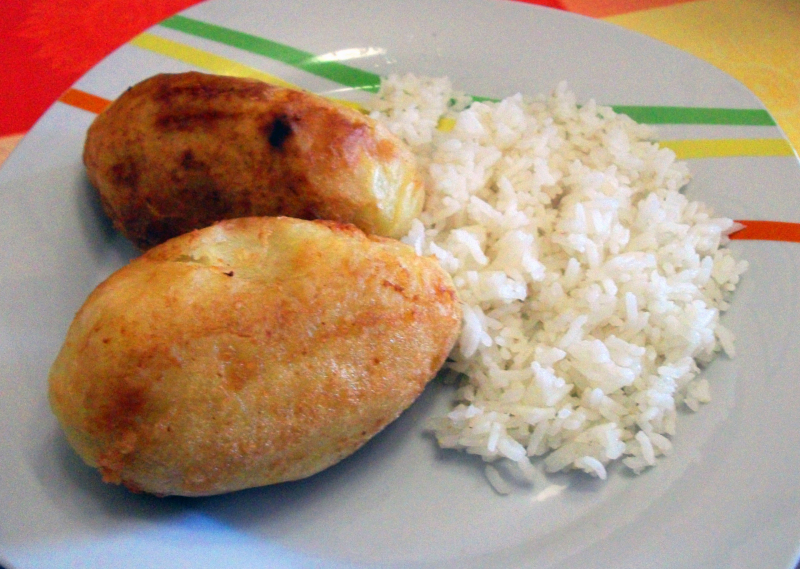
Screenshot of https://commons.wikimedia.org/wiki/File:Papas_rellenas_Per%C3%BA.jpg Video by Simply Mamá Cooks -
Choclo con queso, a popular street food in Peru, has a rich history that reflects the cultural and culinary evolution of the country. This delicious snack consists of boiled or steamed Peruvian corn, known as choclo, paired with a creamy and savory cheese.
In the pre-Columbian era, choclo con queso was a fundamental part of the Inca diet. The indigenous people of Peru cultivated a variety of corn, including the large-kernel choclo, which they would prepare by boiling or roasting. This combination was not only a source of sustenance but also a cultural expression of the Inca people's connection to their land and animals.
With the arrival of the Spanish conquistadors in the 16th century, Peru witnessed a significant culinary fusion. The Spanish brought with them dairy cattle, introducing cow's milk and European cheese-making techniques; this led to the adaptation of choclo con queso. During the colonial period and subsequent centuries, choclo con queso continued to evolve as it embraced new ingredients and preparation methods. The addition of spices, such as aji peppers and cilantro, contributed to a more complex flavor profile.
In modern times, choclo con queso remains a beloved street food in Peru, with variations found throughout the country. While traditional choclo and fresh cheese are still widely enjoyed, you can also find versions that include toppings like huancaina sauce, a spicy cheese sauce, or even bacon. This evolution reflects the ongoing fusion of culinary influences, from indigenous traditions to the Spanish colonial period and beyond, making choclo con queso a delicious embodiment of Peru's rich culinary history.
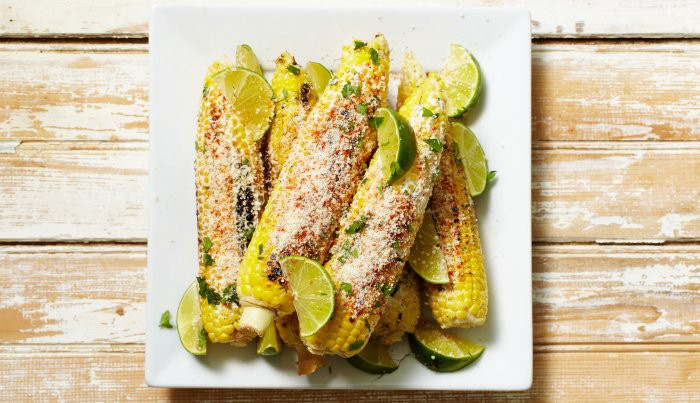
Screenshot of https://www.aarp.org/espanol/cocina/recetas/info-2020/choclo-con-maiz.html Video by Cuk-it! -
Also in the top 10 best street foods in Peru is salchipapas, a beloved Peruvian street food that is a delightful example of culinary fusion. The dish marries the old-world influence of European sausages with the Peruvian tradition of potatoes, creating a unique and savory amalgamation. The rich flavors of the sausages harmonize with the comfort of fried potatoes, forming a dish that satisfies a wide range of tastes.
Salchipapas' appeal to tourists extends beyond its taste; it's also budget-friendly and easily accessible. This street food is readily available in local markets, street corners, and food stalls, making it a convenient and affordable option for travelers exploring Peru. It offers a hearty and filling meal that won't break the bank, making it particularly attractive to budget-conscious tourists.
Salchipapas' charm lies in its delicious simplicity; the dish is made from readily available ingredients, and its preparation is straightforward. Sausages and potatoes are sliced and deep-fried until golden and crispy; while uncomplicated, the taste is anything but ordinary. The contrast between the crispy potatoes and the savory sausages, often accompanied by a variety of condiments and sauces, creates a satisfying and memorable flavor profile that resonates with tourists.
Partaking in Salchipapas is not just about savoring a meal; it's a social and cultural experience. Tourists are often drawn to the communal atmosphere of enjoying this street food alongside locals. Whether at a bustling market or a late-night food stall, sharing Salchipapas with fellow diners provides an opportunity to connect with the people and culture of Peru.
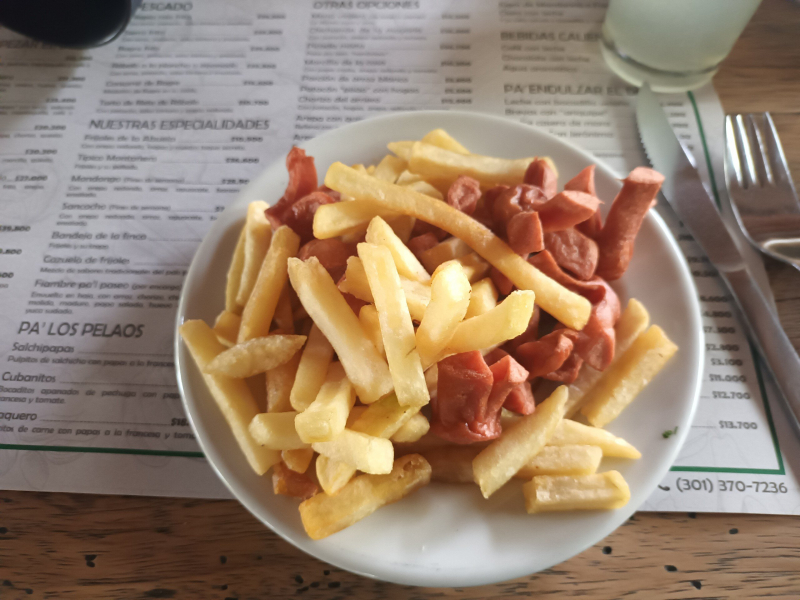
Screenshot of https://commons.wikimedia.org/wiki/File:Salchipapas_20220704_121159.jpg Video by -
Mazamorra de quinua, often known as "msno Juane" in Peru, is a traditional Peruvian dessert with a history that has evolved over the years. This delightful dish is made from quinoa, a staple grain in the Andean region, and its development can be understood through four distinct periods, each marked by changes in ingredients, techniques, and cultural influences. In the pre-Columbian era, quinoa was a vital crop for the Inca people, who highly valued its nutritional content.
With the arrival of the Spanish conquistadors in the 16th century, Peru experienced a significant culinary fusion. The Spanish introduced ingredients like cow's milk and sugar, which led to changes in the preparation of quinoa dishes. Over time, quinoa porridge, now known as "msno Juane," evolved to include cow's milk, making it creamier and more dessert-like. The addition of sugar enhanced its sweetness and transformed it into a beloved treat.
During the colonial period and subsequent centuries, "Msno Juane" continued to develop as it incorporated new ingredients and culinary techniques. Indigenous flavors and ingredients remained prominent, but there were also influences from other parts of the world, such as the introduction of spices and fruits like cinnamon and raisins.
In modern times, "msno Juane" remains a cherished dessert in Peru, with various regional variations. Some versions include additional ingredients like vanilla, cloves, and even chocolate. The evolution of "msno juane" represents the fusion of indigenous and European culinary traditions that have shaped Peruvian cuisine over the centuries, resulting in a delicious and culturally rich dessert that continues to be enjoyed on the streets of Peru.
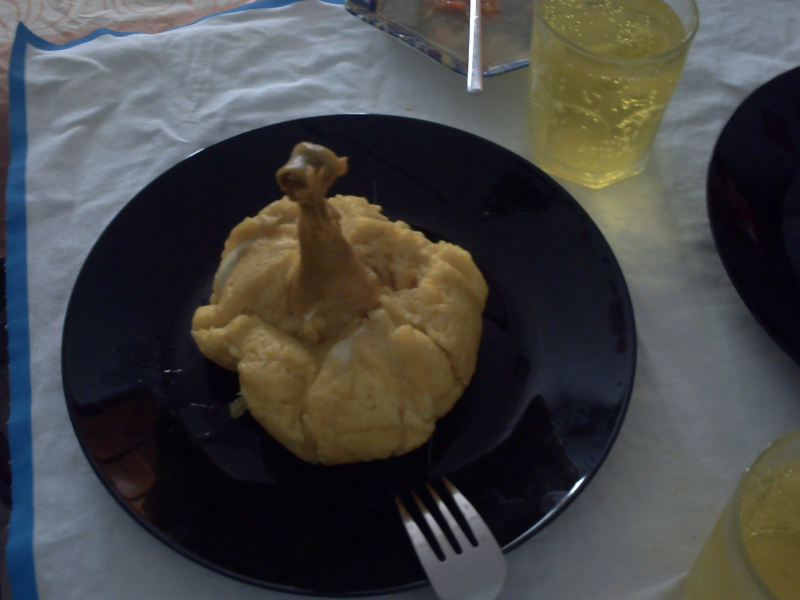
Screenshot of https://commons.wikimedia.org/wiki/File:Juane,_plato_emblema_de_la_selva_del_Per%C3%BA.jpg Video by Samuel and Audrey - Travel and Food Videos












